Last week, I began a new series to help all of you who have been collecting the miles and points be able to expand your destination list with some knowledge. It can be confusing to figure what is required for international travel and I hope this helps you as well.
Guide to International Travel – Visas
 Visas are given to travelers from different countries to allow entrance to another country. As an American passport holder, there are many countries for which you do not need a visa at all, others that you can receive a visa at the port of entry, while there are yet others that require a visa in your passport before travel to that country. Since it so easy to enter the more popular destination countries, travelers get spoiled and often forget to check the visa requirements. Fortunately, airlines are required to check for the proper documentation before you leave the US for your destination country so you get to find out at the airport whether you had what you needed instead of arriving at your destination and being turned away there! Here is some information that I hope can help you not make that mistake and that will better equip you for your travels.
Visas are given to travelers from different countries to allow entrance to another country. As an American passport holder, there are many countries for which you do not need a visa at all, others that you can receive a visa at the port of entry, while there are yet others that require a visa in your passport before travel to that country. Since it so easy to enter the more popular destination countries, travelers get spoiled and often forget to check the visa requirements. Fortunately, airlines are required to check for the proper documentation before you leave the US for your destination country so you get to find out at the airport whether you had what you needed instead of arriving at your destination and being turned away there! Here is some information that I hope can help you not make that mistake and that will better equip you for your travels.
Kinds of Visas
There are many different types of visas, but we will only concentrate here on the tourist visa since that is what you would need to receive to visit a country for vacation or race.
Countries That Do Not Require Visas For US Passport Holders
Many of the countries we are familiar with for travel purposes do not require a visa if you are using a US passport. You will need to have your passport and present it at the point of entry, but you do not need to apply for a visa. In some cases, these countries may stamp your passport upon entry and exit, but this is not so much a visa as an entry and exit stamp to show officials that you have legally entered the country and when that was. Most of these countries have some type of a duration limit, like 90 days, so the stamp helps to show any officials if you are still in the country legally.
Countries That Issue Visas On Arrival For US Passport Holders
There is another list of countries that do require visas but they are issued to US passport holders upon arrival at the port of entry. For some of these visas, you will need to fill out a form and pay a fee to receive the entry visa. If you fit the requirements for these visas on arrival (such as being able to show proof of where you will stay, enough funds to cover your stay, etc), you will be issued the visa and be all set.
Countries That Issue Electronic Visas For US Passport Holders
More countries are moving to this system where you fill out an online form before departure and put your pertinent details in (such as your passport information and arrival/departure dates). You pay the fee and you are all set – nothing in your passport! When you arrive at the airport for your flight to that country, the airline rep will scan your passport and be able to tell if you have a valid e-visa tied to your passport.
Countries That Require Visas In Advance For US Passport Holders
Then we have the most difficult of categories – the countries that require you to apply for a visa before you enter the country. These visas can be issued as quickly as walking into the country’s embassy/consulate and filling out paperwork or can take as long as months of processing. In some cases, these visas may require multiple visits to the country’s embassy/consulate. There are many agencies that can help make this entire process easier. Most of the countries that a new traveler might visit will not require this type of visa but the traveler does need to be aware of the visa requirements so that the trip is not derailed before it begins!
Knowing Which Visa The Country Requires
Airline websites will inform you when you are going through the purchase process that you may need a visa for your destination. It will be your responsibility to determine what, if any, type of visa you will need for your trip. Do not rely solely on what the airline site tells you!
One of the best places to start on identifying which countries require visas for US passport holders is the TIMATIC interface. You can access it here at United’s website (thanks to Seth’s comment below). Should you want to visit the US State Department for information as well, you can find that here. You simply punch in the country you plan on visiting and it will give you all the information you need as to whether or not you will need a visa to enter that country. It is important to know that this is actually the site that the airlines themselves will check to verify if a visa is required, so it makes a great place to check for the traveler.
Visa Agencies
There are a number of agencies that can help you with getting a tourist visa for countries that require it. This list does not mean that I endorse these various agencies, but is to give you the information you need to find the service that best suits your needs.
- VisaCentral
- VisaHQ
- CIBTvisas
- Passports and Visas.com
- Passport Visas Express.com
- travisa
- Allied Passport & Visas (mention my site and receive a $5 discount as well as having a commission directed to me)
The fees they charge and the time it takes to process varies but you can expect the processing fee to cost at least $40 and as high as a couple hundred dollars. The different agencies can offer expedited visa services as well. That will expedite the time they take to handle the request and normally involve an in-person (by the agency) application to the consulate/embassy the day after the application submission. That does not mean the visa will be issued that day, but the agency will expedite the handling of the application.
Even though the fee may sound high, if you would otherwise have to visit a consulate/embassy yourself and it is not in your city, it will still be more cost effective to use the agency than to handle it on your own. A number of years ago for my Brazilian visa, I used Visa HQ and I found them to be very quick and helpful and worth the fee. One of the other agencies listed, Allied Passports, also does very fine work. In fact, if you click this link, you can sign-up for their services and mention that I sent you to receive a $5 discount. *Please note – I will also get a referral should you use them with my name – thank you!
Information Commonly Needed For Visas/Entry
Every country is going to have a separate list of requirements for what they want from you or require that you have before you apply for a visa or entry stamp. For the countries who issue the visas on arrival or simply give entry stamps, they normally do not actually ask for these items at the point of entry but you should have them in case.
- Proof of a return ticket – this is to show that you do not plan on staying in the country for an unlimited time. Even if you are only staying there for a while but are holding off on buying a return ticket, you should still have some type of plan in place in case they ask for proof of return. You do not actually have to have a ticket back to your own country. If you are visiting someplace like the Philippines that does require a return ticket, a one-way ticket from the Philippines to a neighboring Asian country (which can be obtained very cheaply) will be enough to satisfy the requirements. So, the proof just needs to be a ticket showing that you will be leaving the country.
- Sufficient funds – this is a requirement for just about every country that requires a stamp but it is one that has never been requested of me. In the age of credit cards, as long as you have some form of payment to guarantee that you will not be draining the financial resources of the country you are visiting, you will be fine. I have visited many countries with only a few medium-sized bills and my credit cards/debit cards and never had a problem with entry (finding funding sources was another problem and one I will look at in a future post!).
- Lodging – this is to ensure you will not be a vagrant in their country. About one-third of the countries I have entered have asked where I was staying or what the address is where I will be. Only on one or two occasions have they asked where I would be each night of my itinerary, so having the address and name of any hotel you are staying at should be fine. However, always best to be fully prepared, so make sure you have your hotel reservation information with you.
- Insurance – this is going to be different for many countries, but many of them, again, may require you to have proof of insurance to enter. Rarely will you actually be asked for it, but it may be a requirement to enter so check into your insurance coverage to determine if it covers you for your visit. In a future post, I will also examine insurance options, so do not worry if you are unsure at this point.
- Vaccinations – this is one that you will want to check as early as possible. Many countries require certain vaccinations and will want to see proof of those vaccinations. Get that taken care of but make sure you do it within the confines of the calendar! There may be some vaccinations that are only good for a short time and you do not want to get it too early and no longer have it apply for the trip! There are others that require multiple injections over a set number of weeks – don’t procrastinate as it may be too late if you do!
- Passport valid for 6 months after exit – this is one that trips people up often and should be the first thing you check when you book your ticket. When you enter your passenger information, check your passport’s validity. Many countries only require 3 months, but a vast number of them want 6 months of validity to your passport after you leave the country you are visiting, so that is a safe number to consider for all of your travels. That means that your passport is actually only good for 9.5 years instead of 10 :). So, once your passport gets to that six-months left period, fill out your renewal information and get it in for renewal so you will not have to worry. Airlines may actually miss this at times so you may be turned away at the point of entry to the country you are visiting – definitely not a pleasant circumstance!
- Passport pages – I mentioned in the post on passports that you can apply for a passport book that has more pages in it at no extra cost. If you think you are going to be visiting a couple/few countries a year, definitely consider doing that. That is because certain countries will require that you have two blank passport pages in order to enter the country. So, make sure you have plenty of empty passport pages before leaving!
Final Words
There are two final things I want to leave you with that are very important to ensure that you can actually take your trip and enjoy it!
- Bring a printout from the State Department’s website showing the visa requirements! There have been two occasions where I was held from boarding the plane because the airline agents thought that I needed a visa to fly to that country (one of them was Japan). I kept telling them I did not need a visa, but they thought for sure I did and they were not going to let me board the plane. I had to get a supervisor to come over just to have them check to confirm that I was ok! The reason is that the airline is heavily fined for putting someone on a plane to a country when the passenger does not have the proper visa. Once I pulled up on my phone the requirements according to the State Department, which the supervisor was also checking, I was allowed to go and was apologized to.
- Check the visa/entry requirements again just before you leave for your trip! This is something I did not think I would have had to deal with but it happened to me. I had made a reservation for an airport hotel in Colombo, Sri Lanka since I was there for the night and had to catch a flight early the next morning and was told to just come upstairs before the immigration desk to check in. I had my reservation – everything was set. When I arrived, I was told that I could not stay there without a valid ticket and entry stamp. I told them I was unable to get my ticket until the morning when the airline counter opened and that I would use my single entry visa then to go get the ticket. This is what everyone I spoke to before had told me to do. I was told that the laws had changed one week before with regards to entry and that every passenger (that did not have a transit ticket) needed to clear immigration within an hour of arrival(I think it was an hour – may have been 30 minutes) or else their entry would be cancelled. I had no idea about this because it had just changed to reflect that. So, it pays to continue to check your requirements, especially for smaller countries like Sri Lanka.
Hopefully, this guide helps you to better prepare so the actual trip can be a little more stress free!
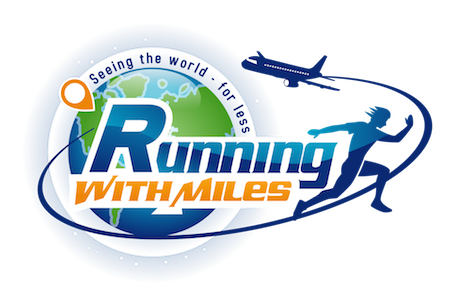
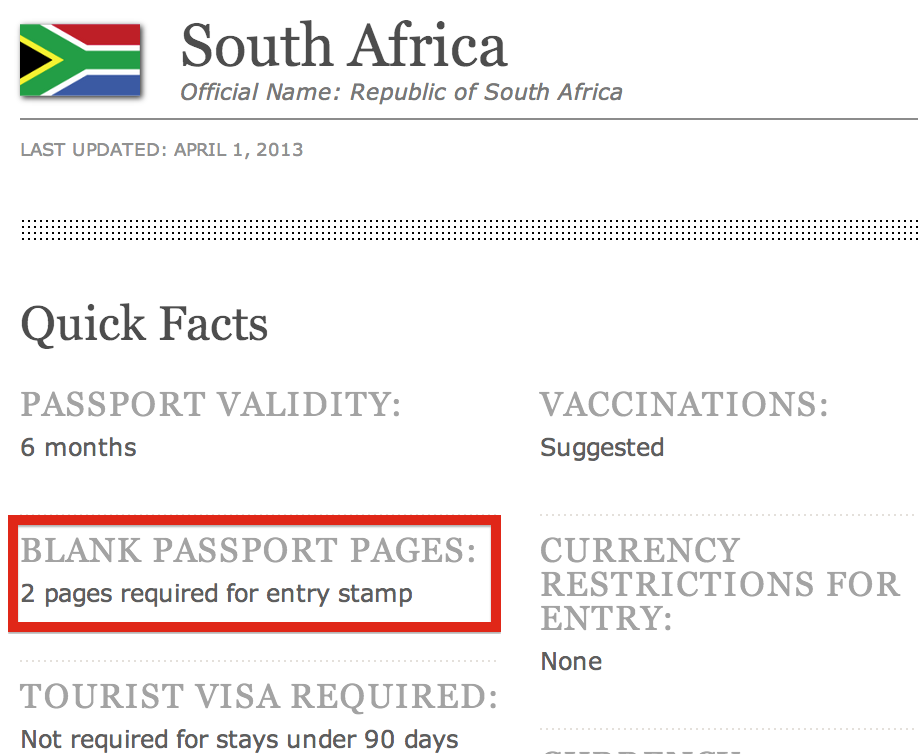
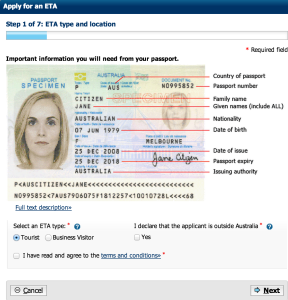
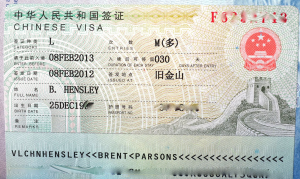
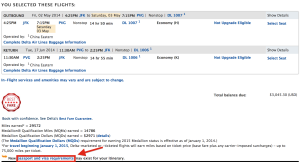
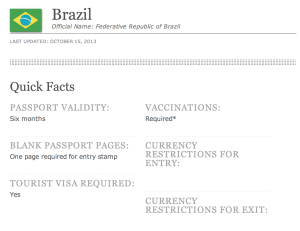
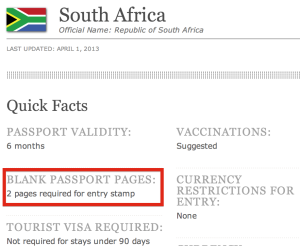







Skip the State Department and use TIMATIC. That’s the interface the airlines are going to use when deciding if you get to board a plane or not. A few different airlines make it readily accessible and the output it provides – especially on more complicated trips with multiple stops – is much more detailed and nuanced than the State Department. Here’s one way to get at it: http://www.united.com/web/en-US/apps/vendors/default.aspx?i=TIMATIC.
Also, that “two blank pages” thing for South Africa is not actually a requirement any more per that country’s authorities. Per TIMATIC:
“Passports and passport replacing documents of all non-South African nationals must contain at least 1 unused visa page for entry/departure endorsements by South African Immigration Service. Please note that this does not include the page reserved for ‘Observations” or “Amendments and Endorsements’.”
Thanks, Seth, good to know and will update accordingly.
Thanks for the useful info Charles. I’m preparing for an epic adventure this summer.